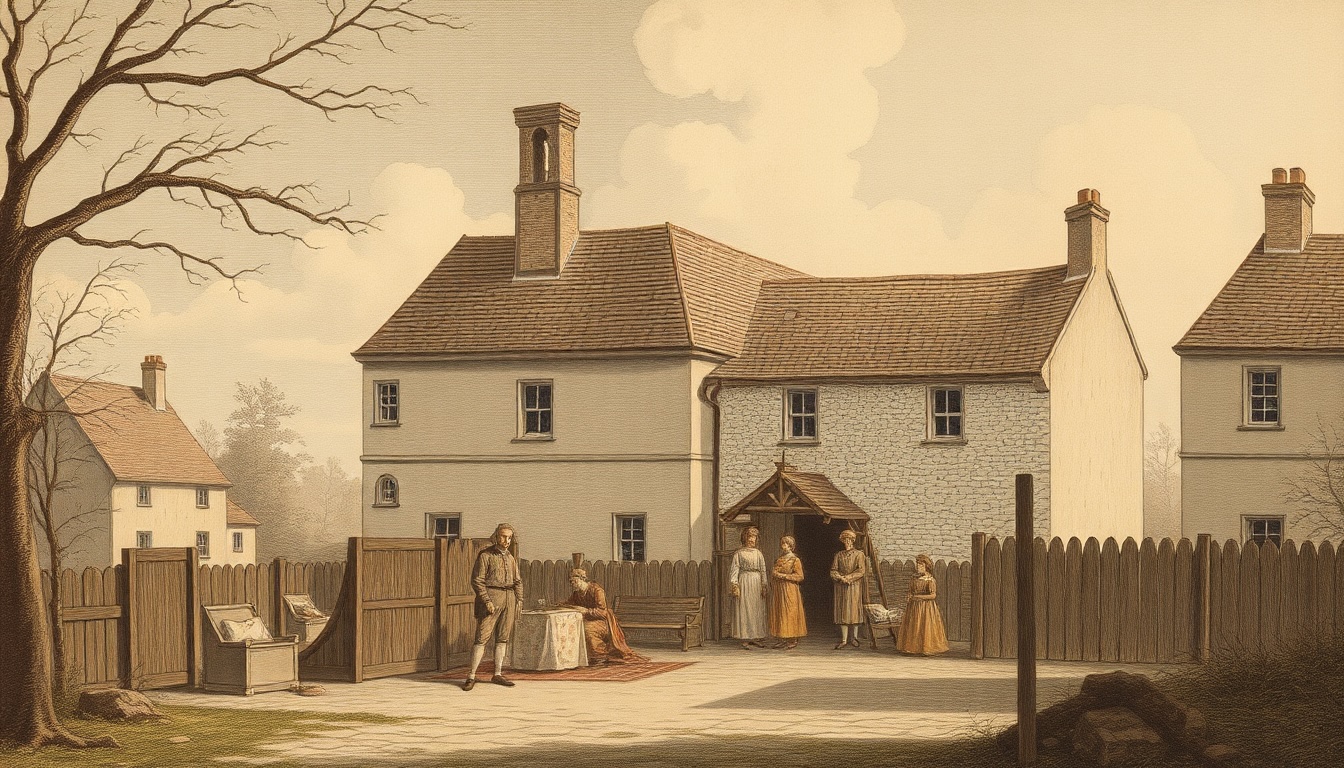Reflections on 18th Century Life
As we conclude our journey through 18th century England, we are left with a vivid picture of a society in transition. From the intimate details of domestic life to the broader sweeps of economic change, the 18th century was a time of both tradition and transformation.
A Changing Society
Throughout this book, we’ve seen how various aspects of life were evolving:
- Medicine and Health: While still reliant on many traditional remedies, medical knowledge was advancing, with practices like inoculation beginning to take hold.
- Social Life and Entertainment: From grand balls to simple card games, social interactions remained central to 18th century life, reflecting and reinforcing class distinctions.
- Clothing and Fashion: Fashion was not just about personal taste but a significant indicator of social status, with clothing choices carrying deep social meanings.
- Domestic Life: The home was the center of daily life, with complex systems of household management reflecting broader social structures.
- Servants and Household Staff: The relationship between servants and their employers provides a unique window into the social dynamics of the time.
- Travel and Transportation: While still challenging by modern standards, improvements in transportation were slowly shrinking distances and changing perceptions of space and time.
- Education and Literacy: Education was becoming more valued, though access remained unequal, laying the groundwork for future reforms.
- Economy and Work: The seeds of the Industrial Revolution were being sown, heralding massive changes in how people worked and lived.
The Value of Primary Sources
Throughout this book, we’ve relied heavily on the words of those who lived through this period. Their diaries, letters, and other writings provide invaluable insights into the thoughts, feelings, and daily experiences of 18th century people. As Mary Delany wrote in one of her letters:
I am fully disposed to fill this sheet, every inch of it; I will not so much as leave a margin, for I have not had this many a day the comfort of talking to you without interruption.
This desire to communicate, to share experiences and thoughts, allows us today to peek into the lives of those long past.
Continuity and Change
While much has changed since the 18th century, many aspects of human experience remain recognizable. The concerns about health, the joy of social interactions, the pride in one’s appearance, the comfort of home, the challenges of travel, the value of education, and the centrality of work – all these continue to shape our lives today.
Yet the differences are stark. The medical treatments that seem barbaric to us now, the rigid class structures, the limited opportunities for women and the lower classes, the acceptance of child labor – these remind us of how far society has come.
Final Thoughts
As we close this exploration of 18th century England, we’re left with a deeper appreciation of both the differences and similarities between their world and ours. The words of these long-gone individuals remind us of our shared humanity, spanning centuries. They faced challenges we can scarcely imagine, yet their hopes, fears, joys, and sorrows resonate with our own.
Perhaps William Holland’s reflection on the past can serve as a fitting conclusion to our journey:
These are disagreeable things and hard it is that Masters should be plagued with the disputes of the servants about punctilios not worth mentioning. They are not hired for this or that thing, is not the language for me. I hire them for all the work they can do.
In his frustration, we see a timeless human experience – the challenge of understanding and managing relationships across social divides. As we face our own social challenges today, the stories of 18th century England offer both cautionary tales and inspirational examples, reminding us of our capacity for both progress and persistence.
